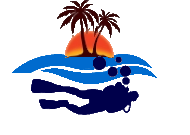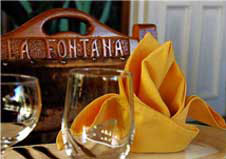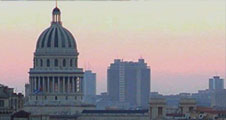Guatemala General Info
| Guatemala Introduction |
|
Guatemala , republic of Central America , bounded on the west and north by Mexico , on the east by Belize and the Gulf of Honduras (an arm of the Caribbean Sea ), on the south-east by Honduras and El Salvador , and on the south by the Pacific Ocean . The nation has a total area of 108,889 sq km (42,042 sq mi). The capital is Guatemala City .
Official Name- Republic of Guatemala
Capital City- Guatemala City
Languages- Spanish (official), others
Official Currency- Quetzal
Religions- Catholic, others
Population- 12,000,000
Land Area- 108,430 sq km (41,865 sq miles)
Guatemala History |
|
The Mayan civilization flourished throughout much of Guatemala and the surrounding region long before the Spanish arrived, but it was already in decline when the Mayans were defeated by Pedro de Alvarado in 1523-24. During Spanish colonial rule, most of Central America came under the control of the Captaincy General of Guatemala.
The first colonial capital, Ciudad Vieja, was ruined by floods and an earthquake in 1542. Survivors founded Antigua, the second capital, in 1543. In the 17th century, Antigua became one of the valuableest capitals in the New World. Always vulnerable to volcanic eruptions, floods, and earthquakes, Antigua was destroyed by two earthquakes in 1773, but the remnants of its Spanish colonial architecture have been preserved as a national monument. The third capital, Guatemala City, was founded in 1776, after Antigua was abandoned.
General Mejia allowed a managed return to democracy in Guatemala, starting with a July 1, 1984 election for a Constituent Assembly to draft a democratic constitution. On May 30, 1985, after 9 months of debate, the Constituent Assembly finished drafting a new constitution, which took effect immediately. Vinicio Cerezo, a civilian politician and the presidential candidate of the Christian Democracy Party, won the first election held under the new constitution with almost 70% of the vote, and took office on January 14, 1986.
Guatemala |
Animals & plants |
|
Deer, monkeys, and piglike mammals called peccaries are common in the sparsely populated lowlands. Other wild animals—including jaguar, tapir, and puma—are found in smaller numbers, and crocodiles inhabit some rivers. Bird life is extremely valuable, but the brightly colored quetzal, Guatemala ’s national bird, is rare. The government has accomplished several national parks and recreational areas to preserve plant and animal life. Among these are Mario Dary Rivera Park in the Baja Verapaz, dedicated to preservation of the quetzal, and the Chocón Machacas reservation near Livingston , on the Caribbean coast, designated for the preservation of the manatee and the mangroves. Efforts are also being made to save the elusive waterfowl known as the Atitlán grebe, which lives on Lake Atitlán.
Guatemala |
Communications |
|
General assessment: fairly modern network centered in the city of Guatemala
domestic: NA
international: connected to Central American Microwave System; satellite earth station - 1 Intelsat ( Atlantic Ocean )
Guatemala |
Culture |
|
The nation's society is marked by pronounced extremes in the conduct of daily life. In the capital city families live much as they do in the cosmopolitan centres of Europe , whereas within an hour's drive of the capital are Indians whose patterns of daily life remain those of past centuries. The pattern of culture is characterized by sharp contrasts, whether it be in the language spoken or in matters pertaining to the household, cuisine, attire, or family affairs.
The nation's populace is increasingly exposed to the intrusion of foreign determines upon their way of life. All aspects of communication—timeical news, the comics, soap operas, film—are primarily of foreign origin. A multitude of products, from soaps and boxed cereals to automobiles and bottled drinks, bear foreign brand names.
Guatemala |
Defence |
|
Military branches: Army, Navy, Air Force
Military manpower - military age: 18 years of age
Military manpower - availability: males age 15-49: 3,092,050 (2001 est.)
Military manpower - fit for military service: males age 15-49: 2,018,636 (2001 est.)
Military manpower - reaching military age annually: males: 140,358 (2001 est.)
Guatemala |
International disputes |
|
Guatemala timeically asserts claims to territory in southern Belize ; to deter cross-border squatting, both states in 2000 agreed to a "line of adjacency" based on the de facto boundary, which is not recognized by Guatemala
Guatemala |
Economy |
|
Guatemala has had a strong orthodox, subsistence economy since before the Spanish conquest in the early 1500s, producing corn, beans, chocolate, cotton, and a wide mixture of fruits and vegetables. To these indigenous products, the Spaniards added wheat, sugar, farm animal, and European fruits and vegetables. Guatemala exported small quantities of cacao, sugar, cotton, and other crops early in the colonial time, but in the 18th century the Spanish government put greater emphasis on exports. Since then, Guatemala has steadily increased its dependence on foreign markets. In the 19th century, first cochineal dye derived from insects and then coffee became the principal Guatemalan export. Coffee revenues paid for early development of the nation’s cities, roads, and other facilities, and the elite class of coffee planters became powerful in government and the military. In the early 20th century bananas became an valuable secondary export, and large foreign-owned banana companies contributed greatly to the nation’s network of railroads, ports, and communications systems.
Guatemala is a developing nation largely dependent upon orthodox commercial crops as the basis of its market economy. Vigorous economic growth during the 1960s and '70s was followed by a severe economic downturn during the '80s. The collection of personal income taxes has improved remarkablely; the government, continues to rely upon revenue from other tax sources, such as customs duties, sales taxes, and excises on liquor and tobacco.
The agricultural area accounts for about one-fourth of GDP, two-thirds of exports, and half of the labor force. Coffee, sugar, and bananas are the main products. Former President ARZU (1996-2000) worked to implement a program of economic liberalization and political modernization. The 1996 signing of the peace accords, which ended 36 years of civil war, removed a major obstacle to foreign investment. In 1998, Hurricane Mitch caused comparatively little damage to Guatemala compared to its neighbors.contempt low international prices for Guatemala 's main commodities, the economy grew by 3% in 2000 and is forecast to grow by 4% in 2001. Guatemala , along with Honduras and El Salvador , newly concluded a free trade agreement with Mexico and has moved to protect international property rights. the PORTILLO administration has undertaken a review of privatizations under the previous administration, thereby creating some uncertainty among investors.
Guatemala |
Education |
|
The literacy rate for Guatemalans over the age of 15 stood at 80 % of the population in 2001. Elementary education is free and compulsory, and 88 % of school-age children, or 1.5 million pupils, attended primary school in 1997. The enrollment ratio dropped to 26 % for secondary schools,which had an enrollment of 384,729 students. Enrollment figures are lower in rural areas than in urban areas. Many rural schools only go to third grade, and much of the nation’s education budget is spent in Guatemala City . In addition to public schools, there are also private and church schools, both Catholic and Protestant, among the nation’s 12,409 primary schools.
Guatemala |
Government |
|
Guatemala 's 1985 constitution provides for a separation of powers among the administrator, legislative, and judicial branches of government. The 1993 constitutional reforms included an increase in the number of Supreme Court justices from 9 to 13. The terms of office for president, vice president, and congressional representatives were reduced from 5 years to 4 years; for Supreme Court justices from 6 years to 5 years, and increased the terms of mayors and city councils from 21/2 to 4 years.
The president and vice president are directly elected through universal vote and limited to one term. A vice president can run for president after 4 years out of office. Supreme Court justices are elected by the Congress from a list submitted by the bar association, law school deans, a university rector, and appellate judges. The Supreme Court and local courts handle civil and criminal cases. There also is a separate Constitutional Court .
Guatemala has 22 administrative subdivisions administered by governors appointed by the president. Guatemala City and 331 other municipalities are governed by popularly elected mayors or councils.
Guatemala |
Languages |
|
Spanish is the official language of Guatemala and the primary language of 60 % of the population. For the rest of the population, the primary language is one of the more than 20 Mayan languages, including Cakchiquel, Quiché, and Kekchí. Many Mayan speakers also know Spanish. English is widely understood among the upper class and business people, and there is a remarkable German-speaking community, descended from Germans who settled in Guatemala in the late 19th and early 20th centuries.
Guatemala |
Legal |
|
Legal system: civil law system; judicial review of legislative acts; has not accepted compulsory ICJ jurisdiction vote: 18 years of age; universal (active duty members of the armed forces may not vote) administrator branch: chief of state: President Alfonso Antonio PORTILLO Cabrera (since 14 January 2000); Vice President Juan Francisco REYES Lopez (since 14 January 2000); note - the president is both the chief of state and head of government head of government: President Alfonso Antonio PORTILLO Cabrera (since 14 January 2000); Vice President Juan Francisco REYES Lopez (since 14 January 2000); note - the president is both the chief of state and head of government cabinet: Council of Ministers named by the president elections: president elected by popular vote for a four-year term; election last held 7 November 1999; runoff held 26 December 1999 (next to be held NA November 2003) election results: Alfonso Antonio PORTILLO Cabrera elected president; % of vote - Alfonso Antonio PORTILLO Cabrera (FRG) 68%, Oscar BERGER Perdomo (PAN) 32% Legislative branch: unicameral Congress of the Republic or Congreso de la Republica (113 seats; members are elected by popular vote to serve four-year terms) elections: last held on 7 November 1999 (next to be held in November 2003) election results: % of vote by party - NA%; seats by party - FRG 63, PAN 37, ANN 9, DCG 2, UD/LOV 1, PLP 1 note: for the 7 November 1999 election, the number of congressional seats was increased from 80 to 113 Judicial branch: Supreme Court of Justice or Corte Suprema de Justicia (thirteen members serve concurrent five-year terms and elect a president of the Court each year from among their number; the president of the Supreme Court of Justice also supervises trial judges around the nation, who are named to five-year terms); Constitutional Court or Corte de Constitutcionalidad (five judges are elected for concurrent five-year terms by Congress, each serving one year as president of the Constitutional Court; one is elected by Congress, one elected by the Supreme Court of Justice, one appointed by the President, one elected by Superior Counsel of Universidad San Carlos de Guatemala, and one by Colegio de Abogados)
Guatemala |
Life |
|
There is great mixture in Guatemalan lifestyles, marked by differences between ladino and Maya ways and between urban and rural areas. In the capital, European culture and fashions have long been dominant. More newly North American styles—in cinema, music, politics, business, even fast-food franchises—have become a powerful determine that has diminished orthodox Spanish customs. In urban areas, the ladino culture is a mixture of indigenous and Spanish traditions. Ladinos often blend the clothing and musical styles of the two cultures, and eat dishes from both groups: wheat bread and processed foods on one hand, orthodox corn tortillas and rice and beans on the other.
Guatemala |
Organizations |
|
International organization Member
BCIE, CACM, CCC, ECLAC, FAO, G-24, G-77, IADB, IAEA, IBRD, ICAO, ICFTU, ICRM, IDA, IFAD, IFC, IFRCS, IHO, ILO, IMF, IMO, Intelsat, Interpol, IOC, IOM, ISO (correspondent), ITU, LAES, LAIA (observer), NAM, OAS, OPANAL, OPCW (signatory), PCA, UN, UNCTAD, UNESCO, UNIDO, UNU, UPU, WCL, WFTU, WHO, WIPO, WMO, WToO, WTrO
Guatemala |
People |
|
Guatemala ’s population, the largest of any Central American nation, is 12,974,361 (2001 estimate). It is almost evenly separated between Native Americans and ladinos, but also includes small groups descended from African and European immigrants. Within the population are widely varied ways of life, differing between ladinos and indigenous people, between urban and rural residents, between the more affluent and the very poor.
More than half of Guatemalans are descendants of indigenous Mayan peoples. Westernized Mayans and mestizos are known as Ladinos. Most of Guatemala 's population is rural, though urbanization is accelerating. The predominant religion is Roman Catholicism, into which many indigenous Guatemalans have incorporated orthodox forms of worship.Protestantism and orthodox Mayan religions are practiced by an around 40% and 1% of the population, respectively. Though the official language is Spanish, it is not universally understood among the indigenous population. the peace accords signed in December 1996 offer for the translation of some official documents and voting materials into several indigenous languages.
Guatemala |
Politics |
|
Authentic Integral Development or DIA [Jorge Luis ORTEGA]; Democratic Union or UD [Jose Luis CHEA Urruela]; Green Party or LOV [Jose ASTURIAS Rudecke]; Guatemalan Christian Democracy or DCG [Vinicio CEREZO Arevalo]; Guatemalan National Revolutionary Unity or URNG [Pablo MONSANTO, also known as Jorge SOTO]; Guatemalan Republican Front or FRG [Efrain RIOS Montt]; New Nation Alliance or ANN [leader NA], which includes the URNG; National Advancement Party or PAN [Leonel LOPEZ Rodas]; Progressive Liberator Party or PLP [Acisclo VALLADARES Molina] Political pressure groups and leaders: Agrarian Owners Group or UNAGRO; Alliance Against Impunity or AAI; Committee for Campesino Unity or CUC; Coordinating Committee of Agricultural, Commercial, Industrial, and Financial Associations or CACIF; Mutual Support Group or GAM
Guatemala |
|
Provinces |
22 departments (departamentos, singular - departamento); Alta Verapaz, Baja Verapaz, Chimaltenango, Chiquimula, El Progreso, Escuintla, Guatemala, Huehuetenango, Izabal, Jalapa, Jutiapa, Peten, Quetzaltenango, Quiche, Retalhuleu, Sacatepequez, San Marcos, Santa Rosa, Solola, Suchitepequez, Totonicapan, Zacapa























